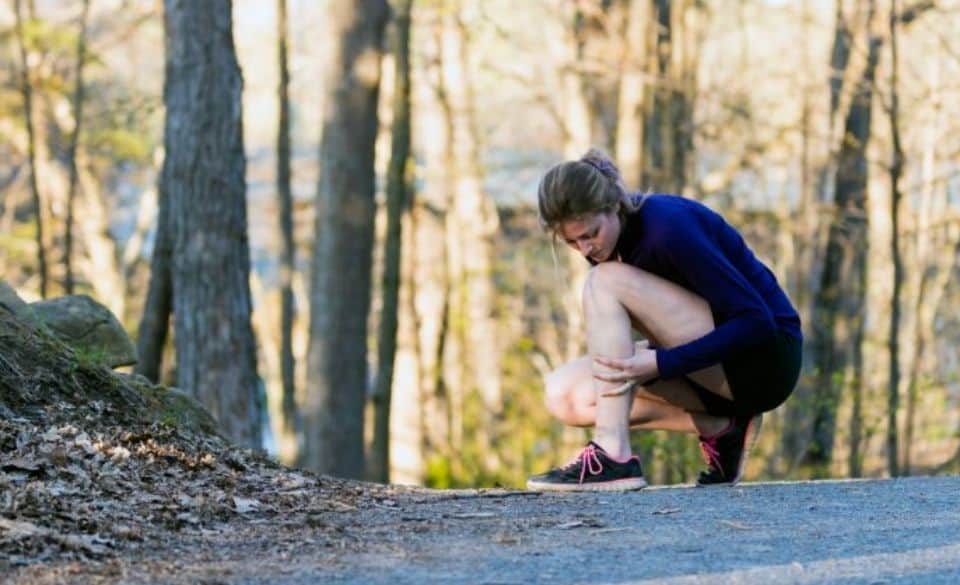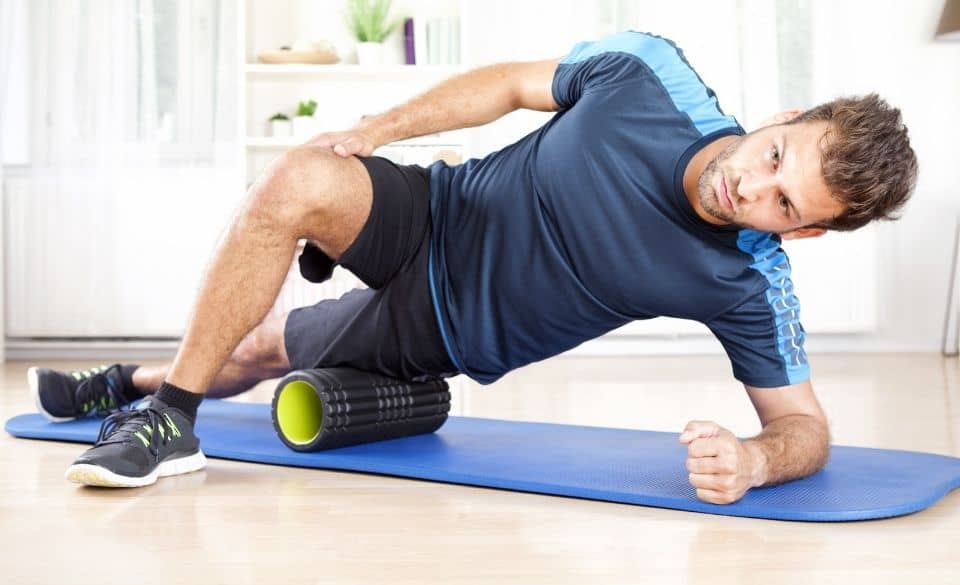
Muscles Still Sore After 4 Days Training – What Should You Do?
Page Contents
Whether you are training for a marathon, cycling 100 miles, or just training, muscle soreness is a common occurrence. But what happens when your muscles are still sore after 3 or 4 days of training? What should you do?
In this article, we look at why this is the case and how you can relieve sore muscles after a workout.
Why Are My Muscles Sore After Working Out?
Whether your cycling, running or working out in the gym, your muscles are required to work hard during exercise. The harder the muscles need to work, the more microscopic damage occurs in the muscle fibres.
This is the main cause of muscle soreness and stiffness, which is classed as DOMS (Delayed-onset muscle soreness).
Anyone can experience sore muscles after working out, even those that have been working out for years, including professional athletes.
However, for new people starting out running or cycling, it can often be alarming and affect their enthusiasm for training. If your muscles are still sore after 2,3 or 4 days of training, don’t stress too much.
The good news is the soreness experienced will often decline as the body adapts to the new training regime.
Unfortunately, muscle soreness is just an adaptation process every new beginner experiences. Following a plan that allows adequate recovery between workouts is vital when starting, this will often help limit the soreness you experience after training.
DOMS or muscle soreness will often last between 2 and 5 days. The pain you experience will often occur the day following your last training session, and the pain you experience will range from mild to severe.
Muscles Still Sore After 4 Days Training
When your muscles are still sore after 4 days of training, you are on the lower level of severe DOMS. This means that you should allow time for the body to recover. You should then cease any high loading or impact training while the muscles go through their recovery period. Otherwise, if you continue to train both your form and technique will be affected and the soreness will only increase, putting you out of training for some time.
This recovery period could take anything from 3-7 days depending on the severity of the DOMS. Luckily there are some ways to relieve sore muscles after a workout, which we will look at now.

How to Relieve Sore Muscles After Workout?
Luckily if you are experiencing DOMS or muscle soreness after running or cycling training, there are ways to relieve sore legs after a workout.
Some simple ways to relieve DOMS after training is:
– Massage
– Elevation
– Foam rolling
– Ice Baths
– Light exercise
– Self Massage
– Rest
All of these are a great way to reduce soreness if your muscles are still sore after 4 days of training or more.
Massaging is a great way to relieve any muscle knots you experience during high amounts of running or cycling. It also helps to reduce inflammation and increase blood flow to the muscles.
Deep tissue massage can help speed up recovery when experiencing DOMS or soreness from training. So if you are experiencing sore muscles for more than 3 days. Book in with a masseuse directly.
Alternatively, if you are experiencing mild symptoms of soreness, other recovery methods like foam rolling and light exercise can be beneficial in reducing soreness. Foam rolling works similar to massage, but is something you can do inside your own home.
Whether your sore or not, we recommend using a foam roller multiple times a week to keep the muscles relaxed and supple while increasing blood flow to the muscles.
Light exercise can also be beneficial to help reduce soreness in the muscles. So if you are experiencing DOMS for a few days after running, try to incorporate cycling or swimming into your training instead of running.
For very mild DOMS, elevating your legs daily can help reduce soreness as well as self-massage. Both of these can be beneficial in reducing discomfort and help keep you on your training path.

Should I Workout With Sore Muscles? – Working Out With DOMS
In short, if you are experiencing mild soreness in the muscles from cycling or running, it should be ok to continue to train. If the soreness is more severe then resting from training should be your main priority.
With mild symptoms of DOMS, you can continue to train if the symptoms don’t affect your body’s ability to train. That means that the soreness should not affect either your form or technique while exercising.
It is recommended while you are feeling sore in the muscles, to reduce the intensity and load on the body. That could mean reducing the duration of your next workout, stopping any planned interval training, or weight training you may be doing. Ultimately all you are doing is reducing the load on the muscles so they have time to recover.
Unfortunately, if you have severe soreness the days after training, rest is most likely the best form of recovery. When the muscles are too sore to train, you end up overcompensating with other muscle groups to relieve the load on the muscles experiencing DOMS. This can, in the worst case, cause mild injuries and keep you out of training for longer.
If you are training in a high load sport such as running, swimming is a great alternative during this time. Since swimming is low impact, it can help your range of motion and keep your fitness level up while you recover.
Summary
To sum things up, understanding the level of DOMS you are experiencing can help you plan your training ahead. If you are unsure whether you should train or not, the answer to the question is – rest.
If you are experiencing DOMS frequently from your training, dial back the volume until you can train unaffected. Then start to slowly increase the volume and/or intensity in smaller amounts this time.
If you experience DOMS less frequently, just allow adequate recovery periods from the workouts causing it, and you should be good to continue training as normal on the other days.




